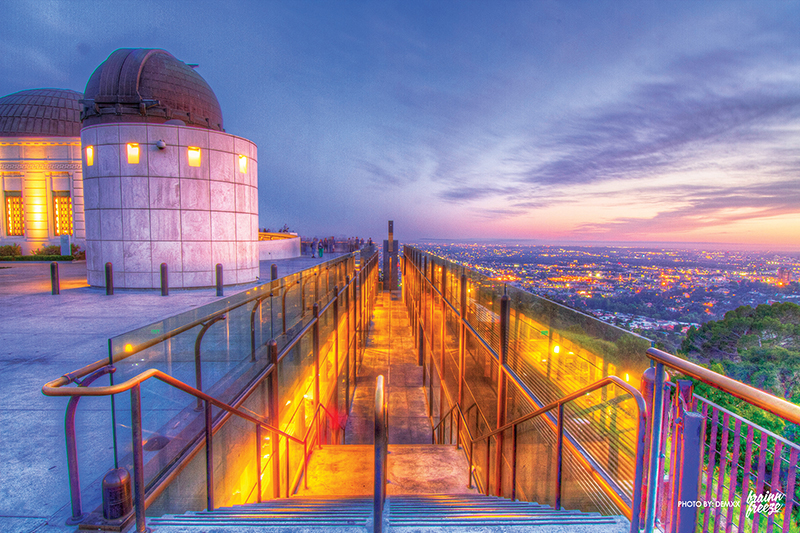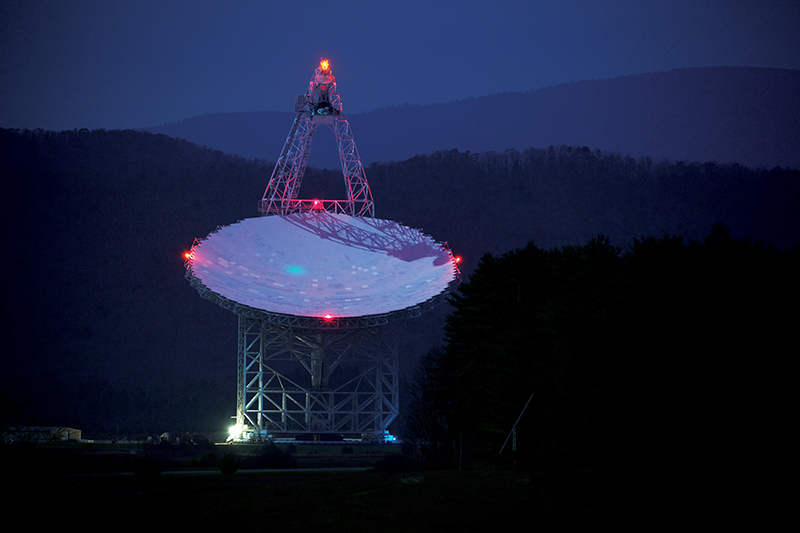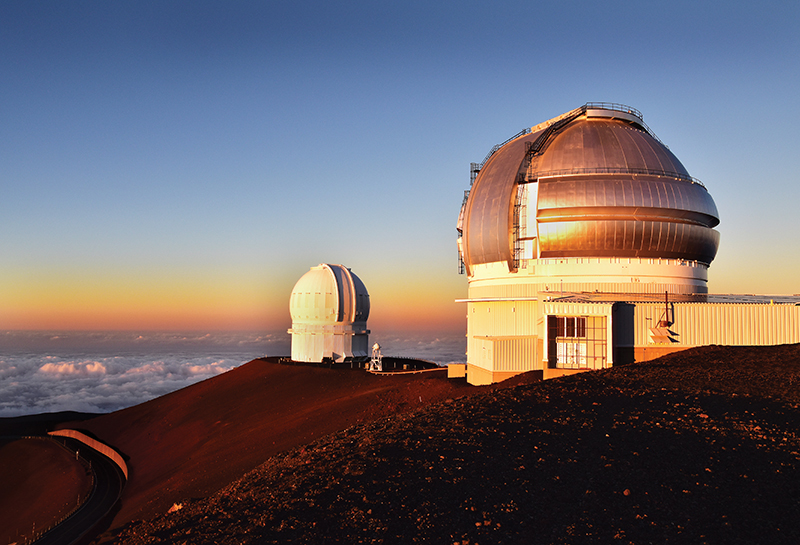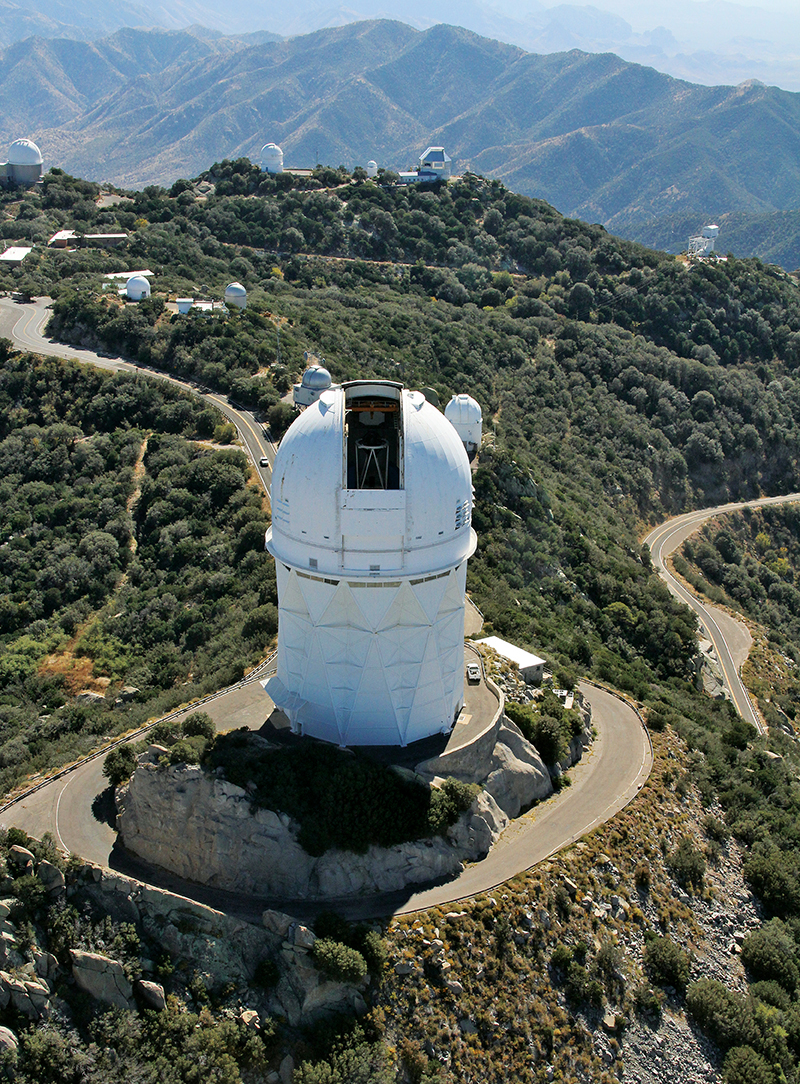9 'Scopes to Scope Around the Country
Spring
2018
Feature
9 'Scopes to Scope Around the Country
Korena Di Roma Howley, Contributing Editor
In an age of increasing urbanization, reaching for the stars can seem even more challenging for a generation of people who’ve never really seen them. According to the UN, city dwellers now make up the majority of the world’s population, and for them a permanent curtain of artificial light has fallen over the cosmos. Enter astro-tourism, where the stars are the destination—at least from the comfort of well-appointed observatories. In the US, places that were largely known only to astronomers are welcoming more and more visitors—some curious, some longing to get their first proper glimpse of the Milky Way. Here are our recommendations for a stellar experience.
Yerkes Observatory (Wisconsin)
Located just 80 miles outside Chicago, the circa 1897 Yerkes Observatory evokes a time when fictional Victorian tinkerers assembled time machines and moon-bound projectiles. Built just four years after the Chicago World’s Fair, which introduced humanity to a spate of enduring novelties, Yerkes was no exception in an era of superlative scientific achievement. The so-called “birthplace of modern physics”—and former hive of the University of Chicago’s Department of Astronomy and Astrophysics—still claims the world’s largest refracting telescope.
Daily guided tours are available, and spots can be reserved for nightly programs that allow you to look through the telescopes. Visit the website (http://astro.uchicago.edu/yerkes/) for tour times and program schedules. Be sure to take in the whimsical architectural details and expansive grounds, which occupy 77 acres on Wisconsin’s Geneva Lake. If you plan to stay in nearby Williams Bay to soak up the all-American scenery, bring along a copy of Jules Verne’s From the Earth to the Moon for chilly nights.

Griffith Observatory (California)
One of the world’s most famous—and visited—observatories, Griffith has transcended its public astronomy roots to become a staple of Hollywood tourism. Opened to eager crowds in 1935, today it sits astride a network of family-friendly trails that afford photo-worthy city and ocean views.
In addition to outdoor telescopes, visitors have access to the Zeiss refracting telescope, which, according to the observatory’s website, more people have looked through than any other telescope.
Admission to the observatory and its grounds is free. Open Tuesday to Friday, 12 p.m. to 10 p.m., and weekends, 10 a.m. to 10 p.m. Closed Mondays. Visit the website (http://www.griffithobservatory.org/) for parking and other transportation options.
Mount Graham (Arizona)
Three impressive telescopes sit atop a peak in southern Arizona’s Pinaleño Mountains, about two hours from Tucson. Operated by a research arm of the University of Arizona’s Department of Astronomy, Mount Graham has had its share of controversy, including concerns for Native American sacred land and a local squirrel species. The costly Large Binocular Telescope (LBT), in operation after decades of delays, is one of the highest resolution optical telescopes in the world.
Guides at Mount Graham take a holistic approach to informing the public. Tours—offered mid-May through October—include information on the mountain’s history, wildlife, and geology. Following lunch on the summit, visitors see the LBT, the Submillimeter Telescope, and the Vatican Advanced Technology Telescope. Advance reservations are required and can be obtained by contacting Eastern Arizona College’s Discovery Park Campus at (928) 428-6260 and via email at discoverypark [at] eac.edu.
Cherry Springs (Pennsylvania)
Tucked in a rural corner of northern Pennsylvania, Cherry Springs State Park attracts visitors from around the country—and the world. Within a day’s drive from most of the metropolitan areas on the eastern seaboard, it sits like a secret portal to the night sky, both extraordinarily dark and uniquely positioned for viewing a central area of the Milky Way during summer months.
The secret is getting out, with visitors coming “just for one night under the stars,” according to education specialist Tim Morey. “It’s something that’s really struck a chord in people.” In 2017, astronomy programs saw nearly 16,000 attendees, up from around 2,500 in 2009, a year after Cherry Springs was designated a Dark Sky Park by the International Dark-Sky Association.
Though nothing’s guaranteed, be sure to time your visit with the new moon and clear skies for optimal viewing. The park is open year-round. Check the website (http://www.dcnr.pa.gov/StateParks/FindAPark/CherrySpringsStatePark/Pages...) for information on upcoming events and current conditions.

Green Bank Radio Observatory (West Virginia)
If you’ve ever wanted to escape the noise of modern life and contemplate the universe, head for the National Radio Quiet Zone, which offers 13,000 square miles of radio silence in eastern West Virginia. Here, the Green Bank Telescope (GBT)—the largest fully steerable instrument of its kind—listens for energy waves from space without the interference of Wi-Fi, radio, or other signals.
Taller than the Statue of Liberty, the GBT itself is an impressive sight. Guided tours of the observatory begin with demonstrations and a short film before a bus takes visitors to view the GBT and other telescopes up close. The site also hosts monthly star parties (weather permitting) and Science Center exhibits. The website (http://greenbankobservatory.org/) has a calendar of upcoming events.
Pine Mountain Observatory (Oregon)
Located about an hour’s drive from Bend, Oregon, Pine Mountain sits at an elevation of 6,300 feet and serves as a research observatory for the University of Oregon’s physics department. The primary viewing instruments are 24- and 15-inch telescopes inside the observatory, plus portable telescopes and binoculars.
Public tours on Friday and Saturday evenings from Memorial Day to late September are followed by guided views of the night sky. If the weather is favorable, viewings can go late into the night. Visitors can bring their own telescopes to use on observatory grounds or at the nearby Forest Service campsite (http://pmo-sun.uoregon.edu).

Mauna Kea (Hawaii)
Rising nearly 14,000 feet, the island of Hawaii’s lofty, sometimes snow-covered peak is a sacred place for native Hawaiians, one that connects them deeply to their roots. For astronomers, the mountain—the world’s highest when measured from the seafloor—is an ideal base for powerful telescopes aimed at the souls of distant galaxies. More than a dozen world-class telescopes now march along the summit, and the overlap of scientific endeavor and spiritual significance hasn’t been without controversy. Always be respectful while on the mountain and observe the visitor rules(http://www.ifa.hawaii.edu/info/vis).
While the telescopes themselves aren’t open to the public, the sunset that silhouettes their domes is unparalleled, even for Hawaii. Afterward, join the free stargazing sessions at the Maunakea Visitor Information Station on Tuesdays, Wednesdays, Fridays, and Saturdays, when guides will help direct your gaze through public telescopes.
McDonald Observatory (Texas)
The University of Texas at Austin’s McDonald Observatory sits beneath a swath of some of the country’s darkest skies. In addition to having half a dozen sophisticated telescopes, the observatory boasts what its website calls “one of the first and most productive lunar ranging stations.”
Daytime tours are available daily from 10 a.m. to 5:30 p.m. (closed some holidays). Popular, family-friendly star parties and twilight programs—which include constellation tours and telescope viewings—are sellout affairs, so advance reservations are highly recommended. Visit the website (https://mcdonaldobservatory.org/visitors) for prices and schedule.

Kitt Peak (Arizona)
High above Arizona’s sunbaked Sonoran Desert, Kitt Peak National Observatory offers stunning views both skyward and across the surrounding valley. Established in 1958, it represents the world’s largest array of optical and radio telescopes, and astronomers there have made important discoveries, including high-redshift galaxies and evidence of dark matter.
Guided tours of the observatory are available daily from 9 a.m. to 3:45 p.m. The visitors center closes on some major holidays and under unforeseen circumstances. Call to confirm they’re open before setting out. Nighttime programs include stargazing and a dark-sky discovery program. Check the website (https://www.noao.edu/kpvc/) for prices and schedules.
